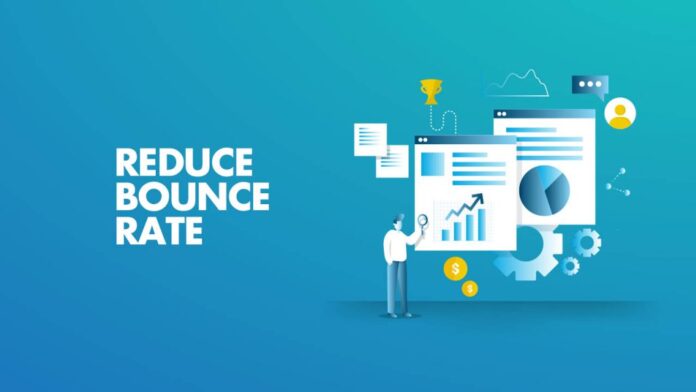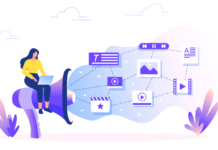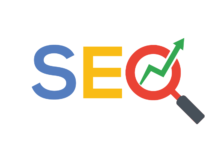Visitors to your website are like guests in your house.
You want them to be comfortable, stay for a long time, and come back often. If you’re having a party, you don’t want them to leave after one drink. Likewise, if you run an online store, visitors shouldn’t leave just because they’ve seen what they came for.
In this article, we’ll show you how to keep visitors on your site longer—and reduce your site’s bounce rate.
What is bounce rate?
Bounce rate is the percentage of visitors who leave your site after viewing only one page.
If you’re getting a high bounce rate, that’s a sign that your website isn’t doing what it should—convincing people to stay and explore more of your content. The bounce rate shows how well or poorly your website converts visitors into customers, leads, or subscribers.
It’s also one of the most critical metrics for measuring the effectiveness of a site’s design and content (and, therefore, its ability to generate leads).
How to Reduce the Bounce Rate on Your Website
1. Suggest Other Content
Previously, you could only suggest other content after a user had completed an action on your site.
But now, you can show suggestions of related content even before someone has finished reading the current page. The main reason for this is that if a user has spent over 10 seconds on a page, it’s likely that they are interested in it—so why not make it easy for them to find more? If you have a blog post about fishing rods and lures, for example, then your users may want to read another article about how best to clean their gear or the best places to go fishing.
By suggesting related articles as soon as they finish reading one of yours, you encourage them to stay longer and explore more opportunities on your site.
2. Show Targeted Content to Engaged Users
One of the easiest ways to keep visitors on your site longer is by showing them more of what they like best.
For example, if a visitor has liked an article you published in the past, then they are likely going to enjoy reading more articles in that same category. If you’re using a blogging platform like WordPress and have installed Jetpack, all these features are already built into your website.
If you’re using another platform, use Google Analytics to find out which pages have had high engagement rates and focus on promoting those pages in the future.
3. Give Users Something Else to Do
Give users a reason to stay on your site.
Most people will visit a website once and leave without doing anything else if they don’t find what they are looking for. The best way to keep visitors engaged is by giving them something else to do while they are on your website. If you have collected email addresses from visitors and sent out an email newsletter with new content or offers, then make sure that there is an easy way for them to subscribe again.
You can do this through popups or checkboxes on any page where subscribers can see what you have published recently.
4. Optimize Content for Search Intent
You need to talk to your customers to optimize the content for search intent.
You should use keyword research tools and look at long-tail keywords in your research. For example, someone looking for anSEO agency in Columbus might type “SEO agency near me” or “local SEO agencies near me” into the Google search engine. When writing content on your website or blog, use these keywords in the right places throughout your post.
This will help improve its relevance for the searchers, which improves the chances of them clicking through to your site and staying on it longer.
5. Improve Your Site Speed
If you want your users to stay on your site longer, then improving your website’s speed is necessary.
This is because site speed is a huge factor in SEO. Google uses page load time to indicate quality and user satisfaction. A faster site will better position you in search results and help improve your click-through rate (CTR), leading to more traffic, conversions, and revenue.
The impact of site speed goes beyond SEO—it affects conversions too.
One study found that slowing down websites by just one second causes people to lose around 10% of their interest in completing the purchase process. That’s enough to make them leave in droves.
Improving your site speed can help keep visitors engaged so that they don’t bounce away before purchasing anything.
6. Optimize Your Site for Mobile Users
If you want to reduce your site’s bounce rate, it’s essential to ensure it works well on mobile devices.
People are more likely to leave a website if it takes too long to load or is difficult to navigate on their phones. The best way to ensure this doesn’t happen is by using the mobile version of your site, which offers everything needed in an easily accessible format for users who are on the go and don’t want or need all the features available on larger screens.
Make sure all pages load quickly when accessed from a mobile device. Otherwise, users may abandon them altogether.
Conclusion:
A big part of creating a great user experience is keeping your visitors on your site longer. There are many ways to do this, but the two most important ones are to quickly provide what they’re looking for and keep them coming back. This post discussed six different strategies to help you keep visitors on your site longer with minimal effort. Remember that you can search online for an “SEO company near me” to help you with reducing your bounce rate.










![Anso FG Reviews: UPDATED 2024 [ansofg.com] Anso FG Reviews UPDATED 2024 [ansofg.com]](/wp-content/uploads/2023/12/Anso-FG-Reviews-UPDATED-2024-ansofg.com_-100x70.png)







